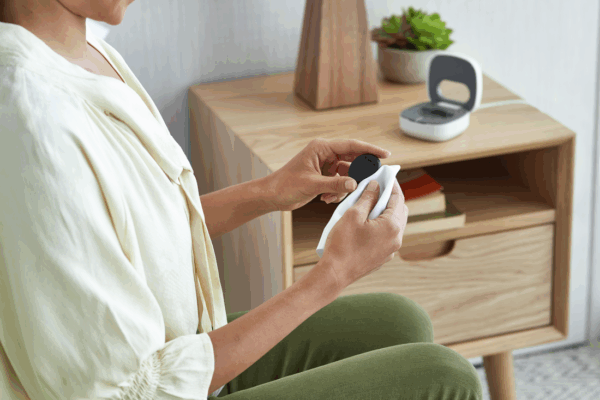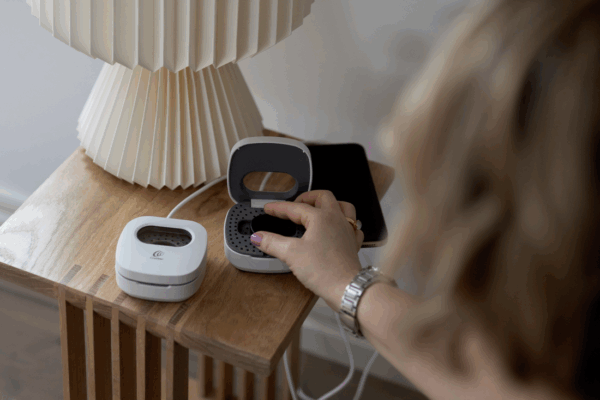You should be wearing your sound processor every day, as much as possible during waking hours, and hopefully experiencing new sounds and experiences. Learn how to care for your cochlear implant sound processor.
Wearing your device for prolonged periods every day exposes it to perspiration, dirt and natural oils. So, how can you maximize its performance and even lengthen its life? There are a few simple steps to follow:
Keep your sound processor dry
Wipe down your sound processor with a soft cloth every night to help keep it clean. Use your drying unit daily to dehumidify your sound processor.
Get into a cleaning routine
- If you have a Nucleus® 8 Nexa™ Sound Processor: Cleaning your device daily will make maintenance easier. Remember to wipe down your processor, coil cable, magnet coil, and earhook with a soft dry cloth every day. You do not have to disconnect the earhook or coil cable.
- If you have a Nucleus Kanso® 3 Nexa Sound Processor: Simply wipe down the sound processor with a soft cloth.
Check your microphone cover
Distorted or unclear sound might be caused by something as simple as a dirty microphone protector, so check for signs of moisture, dirt or grime every night.
In fact, up to one in ten sound processors returned to Cochlear for poor sound quality are working fine—they simply needed the microphone protector (or cover, depending on the model) to be changed.1
To maintain clear sound, we recommend replacing your microphone cover every three months (or sooner if required). It’s important to change these regularly as the microphone covers are designed to keep dirt and moisture away from the sound processor microphones. Over time, they can become blocked, so when you change them, you will find improved performance and sound quality.
If you live in a climate with high humidity, you perspire frequently, your protectors look dirty or you notice any loss in sound quality, replace the microphone protectors sooner than the recommended three months. And remember, if you are a bilateral recipient, replace both microphone covers at the same time.
And if you use a Nucleus 8 Nexa Sound Processor, do this every two months:
Set a reminder in your calendar to replace your dry brik or desiccant tablets every two months. Your sound processor’s drying unit also acts as a dehumidifier, protecting your device from the damaging effects of moisture. Daily cleaning and dehumidifying can help to lengthen your processor’s life span and decrease the need for repairs.
Shop the online Cochlear Store for parts and accessories.

